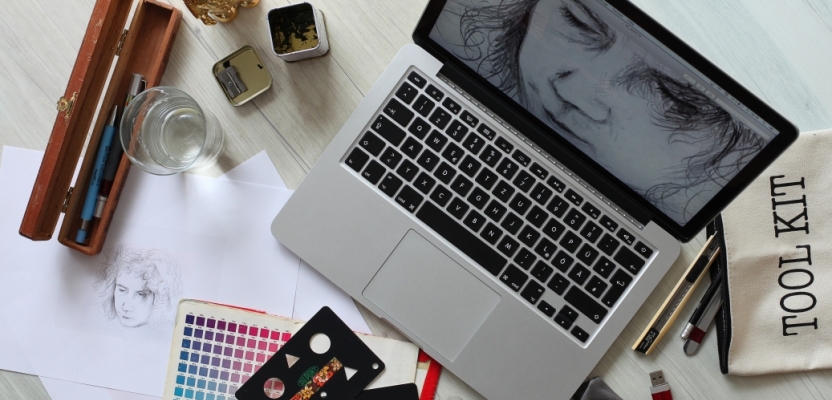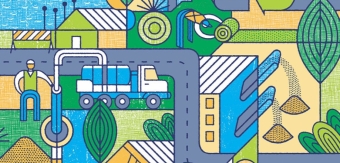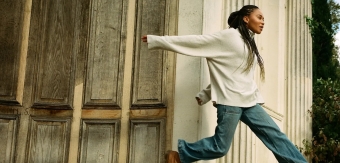I really hope not. But it doesn't look good.
What do the late, great Saul Bass, Milton Glaser, Paul Rand, Massimo Vignelli and Alan Fletcher have in common – other than their skill and enduring influence? They were all proud to call themselves graphic designers.
But as a term – and a job title – it's a dying breed within our industry. It seems to be losing its credibility, and that's a real shame. People don't aspire to that role anymore: it's the 'creatives' that come up with the killer concepts, and anyone daring to call themselves a 'graphic designer' risks being perceived as just an also-ran.
Wearing the badge with pride
Graphic designers and graphic design studios seem to go out of their way nowadays to call themselves anything but, and the list of nonsensical job titles is exhausting. On the one hand, it shouldn't matter what your job title is, so long as you're great at what you do. But at the same time, we shouldn't diminish or devalue the very thing we trained to be. We should wear the badge with pride.
There used to be respect for the craft of being a graphic designer: aspiring to find that holy grail of a simple, beautifully crafted idea that your peers wish they'd thought of. Solving a problem elegantly and efficiently. Communicating with purpose.
Over the last few decades, digital technologies have made what we do much more accessible at the entry level. In their heydays, the pioneers of graphic design weren’t firing up Photoshop to push pixels around – at its best, graphic design was about sharp minds crafting a big idea, and skilled hands crafting the solution beautifully.
But a Creative Cloud subscription does not a graphic designer make. That’s like saying all you need to be an artist is an easel and a paintbrush, or a novelist just needs a notepad. Just because we use Macs, doesn’t mean we’re all Mac monkeys.
Building on the fundamentals
The craft of graphic design is as much about thinking as it is doing. You need to know your way around a grid, and things like the rules of composition and how to pick the perfect colour or typeface. But it’s also about grounding your work in the bigger picture. Knowing your design history. Understanding the influential movements and graphic designers of the past and having the confidence to help shape what graphic design looks like in the future.
Put it this way: if you had to Google who Bass, Glaser, Rand, Vignelli and Fletcher are, then perhaps it’s time to go back to the drawing board and brush up on your design education.
The tools we use as graphic designers may have changed, and our processes have evolved to suit the modern world. But craft should still be king. You don’t have to call yourself a ‘creative’ to put creativity at the heart of everything you do.
The ‘traditional’ principles that the great graphic designers of the past swore by are no less relevant today – whatever platform you're designing for. Our craft is not, and has never been, limited to designing logos and posters. Today there’s an abundance of mediums and platforms for which graphic design is deployed, from packaging and print, to the look and feel of digital and social channels, to motion graphics and film.
The platforms and creative opportunities available have never been greater, but the one true constant is that graphic design can rise to the challenge. We are in a unique position to influence people’s opinions and behaviour, by creating simple or bold designs to support a specific brand or campaign message. Design can evoke emotions, igniting fear and anger, as well as passion, excitement, determination and empathy. The persuasive power of good graphic design is the ultimate goal.
Solving the brief
Let’s be clear; solving the brief is the goal, while emerging technologies are just another tool to bring an idea to life. As graphic designers, we’re not just pushing pixels around or making things look pretty. We’re problem solvers.
We’re like magpies: we collect and absorb whatever knowledge a project requires and become an expert on the fly. We listen to the needs and aspirations of clients or brands and nurture a truly collaborative approach to meet the brief and deliver great results.
Without doubt, our profession must evolve and adapt to take advantage of new technologies and tools available to us. And our success depends on collaboration with many other talented individuals and specialists. Graphic design can't do it all. But it should be given the respect it deserves, and we shouldn’t be ashamed to shout that from the rooftops to our peers and our clients alike.
I’m still proud to be a graphic designer. Are you?
Four key takeaways
- We should be proud to call ourselves graphic designers: it’s not only ‘creatives’ who can come up with killer concepts.
- Our craft isn’t devalued just because the technology needed to do the job is more accessible. Graphic design is still a skilled profession.
- Graphic designers do more than design logos and posters. We solve problems across any platform: it’s all about the idea.
- Collaboration is key: we must adapt and evolve, working with our clients and other specialists to meet the needs of the modern world. But graphic design is not dead.








Ruth Waddingahm December 3rd, 2021, in the morning
Brilliantly put Ben, I’ve been thinking the idea of ‘ideas first’ got lost somewhere in the technology. Now when I say I’m a graphic designer the general response is ‘oh so you ‘do’ photoshop’. I saw a poster ad on London Underground with the headline ‘Become a graphic designer in 6 weeks’. I was crushed!